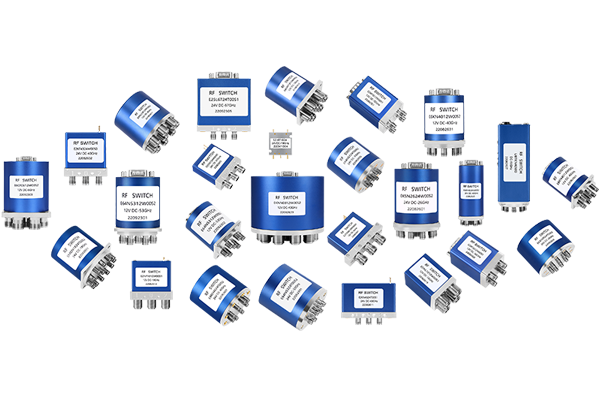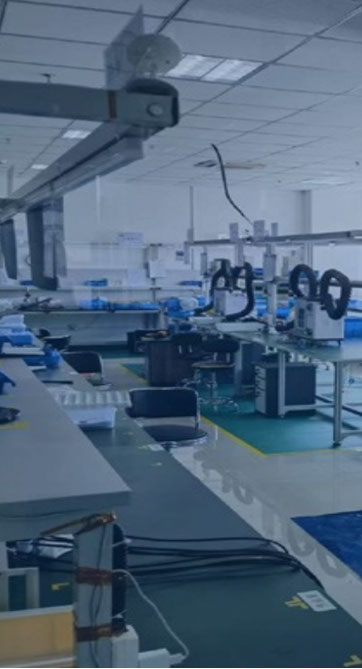
Pin diode components are considered indispensable in advanced RF applications because of their core operational properties Their ability to operate with fast state changes and low capacitance while maintaining minimal insertion loss fits them to switching modulation and attenuation tasks. The underlying principle of PIN diode switching involves controlling charge flow through the junction by biasing the device. Voltage bias impacts the depletion layer width across the junction and consequently the conduction. Adjusting the bias enables PIN diodes to be switched for high-frequency operation while minimizing distortion
In systems that require precise timing and control PIN diodes are commonly integrated into sophisticated circuit topologies They are suited to RF filtering arrangements for selective band pass and band stop operations. Moreover their high-power handling capability renders them suitable for use in amplification division and signal generation stages. Smaller, more efficient PIN diodes have expanded their application scope in wireless communications and radar technologies
Analyzing the Performance of Coaxial Switch Designs
Developing coaxial switches is complicated and depends on careful analysis of key parameters Performance depends on which switch style is used the operational frequency and insertion loss performance. An efficient coaxial switch should reduce insertion loss while optimizing isolation between ports
To analyze performance one must evaluate metrics such as return loss insertion loss and isolation. These values come from combined use of simulations theoretical predictions and experimental validation. Accurate performance evaluation is key to ensuring coaxial switches operate dependably
- Simulation, analytical modeling and experimental testing are widely utilized to examine coaxial switch designs
- Environmental temperature impedance mismatches and production tolerances can significantly influence switch characteristics
- New advances trends and innovations in coaxial switch engineering aim to enhance performance metrics while cutting size and power consumption
Low Noise Amplifier LNA Design Optimization
Enhancing the performance efficiency and gain of a Low Noise Amplifier is vital for preserving signal integrity in many systems Achieving results demands careful transistor picks optimized bias settings and considered topology design. Well engineered LNA circuits reduce noise influence and increase amplification while controlling distortion. Analytical modeling and simulation utilities are key to predicting how different design options influence noise behavior. The objective is achieving a low Noise Figure which measures the amplifier’s ability to preserve signal strength while suppressing internal noise
- Opting for transistors with small inherent noise is a vital design decision
- Optimal proper and suitable bias conditions are necessary to limit noise generation in transistors
- Circuit layout and topology have substantial impact on noise characteristics
Employing matching networks noise suppression and feedback systems refines LNA performance
Radio Frequency Path Routing with Pin Diodes

Pin diode switch arrangements provide adaptable and low-loss routing for RF signal management Fast state changes in these devices permit agile dynamic routing of RF signals. PIN diodes provide the dual benefit of small insertion loss and high isolation to protect signals. Use cases include antenna selection duplexer networks and phased array antennas
Switching depends on bias-induced resistance changes within the diode to route signals. In its open state the diode’s resistance is high enough to stop signal flow. With forward bias the diode’s resistance diminishes permitting the RF signal to flow
- Moreover furthermore additionally PIN diode switches provide quick switching low energy use and small form factors
Various architectures configurations and designs of PIN diode switching networks enable complex routing operations. Through interconnection of switches one can construct dynamic matrices for adjustable signal path routing
Coaxial Microwave Switch Performance Evaluation

The evaluation assessment and testing of coaxial microwave switches is essential to confirm optimal operation in complex electronic systems. Various performance drivers like insertion reflection transmission loss isolation switching speed and bandwidth influence switch behavior. A comprehensive evaluation process involves measuring these parameters under a variety of operating environmental and test conditions
- Further the testing should consider reliability robustness durability and capability to withstand harsh environmental factors
- Ultimately findings from a thorough evaluation yield critical valuable essential insights and data for selecting designing and optimizing switches for targeted uses
Minimizing Noise in LNA Circuits A Comprehensive Review
LNA circuits play a crucial role in wireless radio frequency and RF systems by boosting weak inputs and restraining internal noise. This review gives a broad examination analysis and overview of methods to lower noise in LNAs. We investigate explore and discuss critical noise mechanisms like thermal shot and flicker noise. We also review noise matching feedback implementations and biasing tactics aimed at reducing noise. It highlights recent progress including advanced semiconductor materials and novel circuit topologies that cut noise figure. Through detailed coverage of noise reduction principles and techniques the article aids researchers and engineers in crafting high performance RF systems
Rapid Switching System Uses for PIN Diodes

PIN diodes have exceptional unique remarkable properties that suit high speed switching applications Their small capacitance and low resistance facilitate high speed switching suitable for accurate timing control. Also PIN diodes respond proportionally to voltage which allows controlled amplitude modulation and switching actions. This flexible adaptable versatile behavior makes PIN diodes suitable applicable and appropriate for varied high speed roles They find use in optical communications microwave circuitries and signal processing devices and equipment
Coaxial Switch Integration with IC Switching Technology
IC coaxial switch technology represents a major step forward in signal routing processing and handling for electronic systems circuits and devices. These integrated circuits are tailored to control manage and route signals via coaxial connections with high frequency performance and low insertion latency. IC driven miniaturization allows compact efficient reliable and robust designs tailored to dense interfacing integration and connectivity requirements
- Through careful meticulous and rigorous application of such methods engineers can design LNAs with top tier noise performance enabling dependable sensitive systems Through careful meticulous and rigorous application of such methods engineers can design LNAs with top tier noise performance enabling dependable sensitive systems With careful meticulous and rigorous execution of pin diode switch these strategies designers can obtain LNAs exhibiting excellent noise performance for sensitive reliable systems Through careful meticulous and rigorous implementation of these approaches engineers can achieve LNAs with exceptional noise performance supporting sensitive reliable systems
- Use scenarios include telecommunications data communication systems and wireless networks
- Integrated coaxial switches are valuable in aerospace defense and industrial automation use cases
- Consumer electronics audio video equipment and test and measurement systems also use IC coaxial switch technology
Considerations for LNA Design at Millimeter Wave Frequencies

At mmWave frequencies LNAs must contend with greater signal attenuation and intensified influence from noise sources. Parasitic elements such as capacitance and inductance dominate performance at mmWave so layout and component selection are critical. Controlling input match and achieving high power gain are critical essential and important requirements in mmWave LNA design. Selecting active devices like HEMTs GaAs MESFETs and InP HBTs greatly affects achievable noise figures at these frequencies. Moreover additionally moreover the design implementation and optimization of matching networks is vital to ensure efficient power transfer and impedance match. Package-level parasitics should be considered because they may impair LNA function at mmWave. Implementing low-loss transmission lines along with proper ground plane design is essential necessary and important for reducing reflection and ensuring bandwidth
Modeling Strategies for PIN Diode RF Switching
PIN diodes serve as important components elements and parts within a variety of RF switching applications. Accurate precise and detailed characterization of these devices is essential for designing developing and optimizing reliable high performance circuits. The work involves analyzing evaluating and examining electrical characteristics like voltage current resistance impedance and conductance. The characterization includes frequency response bandwidth tuning capabilities and switching speed latency or response time
Moreover additionally furthermore creating accurate models simulations and representations for PIN diodes is crucial essential and vital to forecast behavior in RF systems. Various modeling approaches such as lumped element distributed element and SPICE models are used. Appropriate model choice depends on specific application needs and the required desired expected accuracy levels
Sophisticated Techniques to Achieve Minimal LNA Noise
LNA design is a critical undertaking that demands precise attention to topology and parts selection to achieve low noise. Recent emerging and novel semiconductor advances have opened the door to innovative groundbreaking sophisticated design techniques that cut noise significantly.
Key techniques include employing utilizing and implementing wideband matching networks incorporating low noise high gain transistors and optimizing biasing schemes strategies and approaches. Additionally furthermore moreover advanced packaging and thermal management techniques are important to lower external noise sources. With careful meticulous and rigorous deployment of these approaches developers can accomplish LNAs with outstanding noise performance enabling trustworthy sensitive electronics
